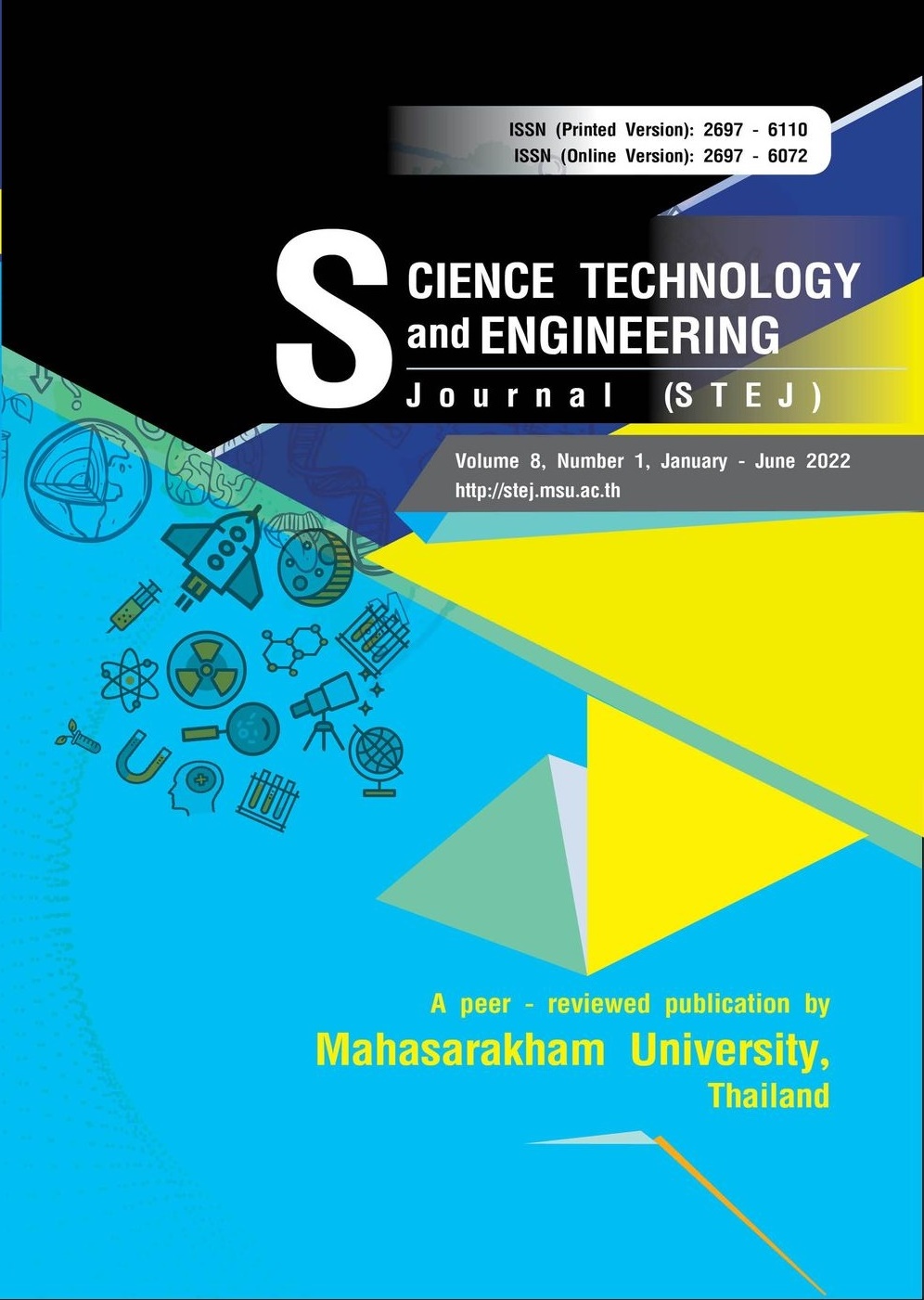Effects of baking time and temperature on product quality of ready to eat crispy stretched shrimp
Keywords:
Baking time, baking temperature, product quality, crispy stretched shrimpAbstract
Baking conditions play an important role in producing crunchy foods of good quality. Recent studies focus on proper baking conditions for commercial production of ready to eat crispy stretched shrimp, acceptable to consumers. The aim of this study is to evaluate how different baking times and temperatures affect product quality of ready to eat crispy stretched shrimp. Cooked, stretched shrimps were baked at three different temperatures (75o C, 80o C, and 85o C), and three different times (8h, 10h and 12h). Sensory quality assessment, determining the appropriate baking time and temperature for crispy stretched shrimp, was performed with 30 participants, using the hedonic nine-point scale. Results found that baking temperature and time had a significant (p≤0.05) effect on physical and chemical quality of the product. Higher value of color, hardness, aw, and moisture was found in conditions of baking stretched shrimp at 80-85°C, with an 8-hour baking time. However, products baked at 80°C, with a 10-hour baking time, were most acceptable, in terms of color, flavor, taste, texture and overall preference. Mean hedonic acceptance ratings (n=100), for overall acceptance of the products baked under this baking condition, were 8.0, indicating a high point. In 100-gram samples, carbohydrate, protein, fat, fiber, cholesterol, and sodium were 34.40g, 47.04g, 3.47g, 2.61g, 0.42g, and 1.06g, respectively. Energy content was 356.99 Kcal per 100 grams. The finding of this study recommends optimal baking conditions for crispy stretched shrimp to be baked at 80 °C for 10 hours. This will, prepare nutritionally rich and organoleptically acceptable product, using stretched shrimp.
References
Aaslyng, M.D., Bejerholm, C., Ertbjerg, P., Bertram, H.C., & Andersen, H.J. (2003). Cooking loss and juiciness of pork in relation to raw meat quality and cooking procedure. Food Qual. Prefer., 14, 277-288.
Association of Official Agricultural Chemists. (2010). Official methods of analysis (17th edition).
Association of Official Analytical Chemists. Bacteriological Analytical Manual. (2001). Chapter 3: Aerobic Plate Count. USFDA.
Dai, Y., Miao, J., Yuan, S.Z., Liu, Y., Li, X. M., & Dai, R.T. (2013). Colour and sarcoplasmic protein evaluation of pork following water bath and ohmic cooking. Meat Sci., 93, 898-905.
Department of Trade and Industry Torry Research Station. (n.d). Handling and Processing Shrimp. https://www. fao.org/3/x5931e/x5931e01.htm.
Domínguez, R., Gómez, M., Fonseca, S., & Lorenzo, J.M. (2014). Influence of thermal treatment on formation of volatile compounds, cooking loss and lipid oxidation in foal meat. LWT - Food Sci. Technol., 58, 439-445.
Erkmen, O. & Bozoglu, T.F. (2016). Food microbiology: principles into practice. John Wiley & Sons.
Johnston, I.A., Alderson, R., Sandham, C., Dingwall, A., Mitchell, D., Selkirk, C., Nickell, D., Baker, R., Robertson, B. & Whyte, D. (2000). Muscle fibre density in relation to the colour and texture of smoked Atlantic salmon (Salmo salar L.). Aquaculture, 189, 349.
Kadam, S.U., Tiwari, B.K. & O’Donnell, C.P. (2015). 6 - Improved thermal processing for food texture modification. In: Modifying Food Texture Volume 1: Novel Ingredients and Processing Techniques (pp. 115-131). Woodhead Publishing Series in Food Science, Technology and Nutrition.
Khumnon, T & Sriwongkaeo, P. (2022). Cost and return of stretching shrimp product processing at Bansakla Nakluea subdistrict Mueang Phra Samut Chedi district Samutprakan Province. Proceedings of the Ninth National Symposium Concerning the research Work (pp. 191-198). Bangkok Thonburi University.
Knerr, T., Lerche, H., Pischetsrieder, M. & Severin, T. (2001). Formation of a Novel Colored Product during the Maillard Reaction of d-Glucose. Journal of Agricultural and Food Chemistry, 49 (4), 1966-1970.
Lipscomb, K., Rieck, J. & Dawson, P.L. (2016). Effect of Temperature on the Intensity of Basic Tastes: Sweet, Salty and Sour. Journal of Food Research, 5(4), 1.
Manheem, K., Benjakul, S., Kijroongrojana, K., & Visessanguan, W. (2012). The effect of heating conditions on polyphenol oxidase, proteases and melanosis in pre-cooked Pacific white shrimp during refrigerated storage. Food Chem, 131, 1370- 1375.
Martínez-Alvarez, O., López-Caballero, M.E., Gómez-Guillén, M.C., & Montero, P. (2009). The effect of several cooking treatments on subsequent chilled storage of thawed deep water pink shrimp (Parapenaeus longirostris) treated with different melanosis-inhibiting formulas. LWT - Food Sci. Technol., 42, 1335-1344.
Ministry of Industry. (2003). Community product standard of shredded pork crispy rice: Document of CPS at 28/2003. Agro product standard office.
Niamnuy, C., Devahastin, S., & Soponronnarit, S. (2007). Quality changes of shrimp during boiling in salt solution. J. Food Sci., 72, S289-297.
Palka, K. & Duan, H. (1999). Changes in texture, cooking losses, and myofibrillar structure of bovine M.semitendinosus during heating. Meat Science, 51, 237-243.
Panghorn, R.M., Chrisp, R.B., & Bertolero, L.L. (1970). Gustatory, salivary, and oral thermal responses to solutions of sodium chloride at four temperatures. Perception & Pyschophysics, 8(2), 69.
Sriboonchitta, S., Thong-ngam, K. & Untong, A. (2001). Thai shrimps in the world production and market, agribusiness research on marketing and trade. Chiang Mai University.
Tornberg, E. (2005). Effects of heat on meat proteins - Implications on structure and quality of meat products. Meat Sci., 70, 493-508.
Xu, Y., Chen, Y., Cao, Y., Huang, W., Zhang, S., Xia, W. & Jiang, J. (2016). Effect of Steam Cooking on Textural Properties and Taste Compounds of Shrimp (Metapenaeus ensis). Food Science and Technology Research, 22 (1), 75-81, 2016.
Downloads
Published
How to Cite
Issue
Section
License
Copyright (c) 2022 Science Technology and Engineering Journal (STEJ)

This work is licensed under a Creative Commons Attribution-NoDerivatives 4.0 International License.







